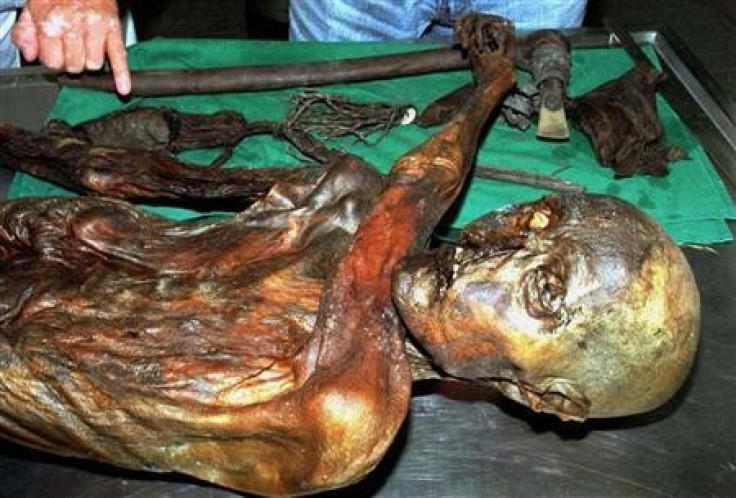Otzi the Iceman Holds the World's Oldest Blood Cells

The world's oldest red blood cells have been found in Otzi, the 5,300-year-old iceman, who was discovered in 1991 in the Italian Alps, according to a study published in the Journal of the Royal Society Interface.
Otzi's body was found with an arrow at the back and other wounds by Italian hikers. So far, mystery has prevailed over the death of Otzi - whether he died immediately after the arrow wound or lived for a while.
Scientists led by Albert Zink of the Ludwig Maximilian University in Munich, southern Germany have now found evidence that Otzi lived for a while after the arrow wound.
The researchers used nano-scale methods to investigate the iceman. By using an atomic force microscope, the researchers studied thin layers of tissue at the arrow wound and also on a deep cut on his right hand, reports the Telegraph.
Then they built a three-dimensional image of the tissue by checking every tiny point on the tissue. They found the sample had contained structures with distinctive "doughnut" shape, just like the red blood cells have and also noticed traces of fibrin, which are factors for blood clotting.
They also confirmed the finding by using a laser-based technique Raman spectroscopy. The results showed the presence of haemoglobin and fibrin in the wound.
"Because fibrin is present in fresh wounds and then degrades, the theory that Oetzi died straight after he had been injured by the arrow, as had once been mooted, and not some days after, can no longer be upheld," Telegraph quoted Zink as saying.
Earlier studies on the iceman revealed details including his age and other physical features. The researchers also determined that Otzi died around the age of 45 and he was about 1.60 metres (five foot, three inches) tall and weighed 50 kilos (110 pounds). They have sequenced the full genome of Ötzi, and found that he had brown eyes, O blood type and was intolerant to lactose, which meant he couldn't take milk products.
Otzi is said to be the earliest case to be affected by Lyme disease after scientists noticed traces of bacteria that is responsible for causing infections. He was also genetically predisposed to heart disease.
© Copyright IBTimes 2024. All rights reserved.





